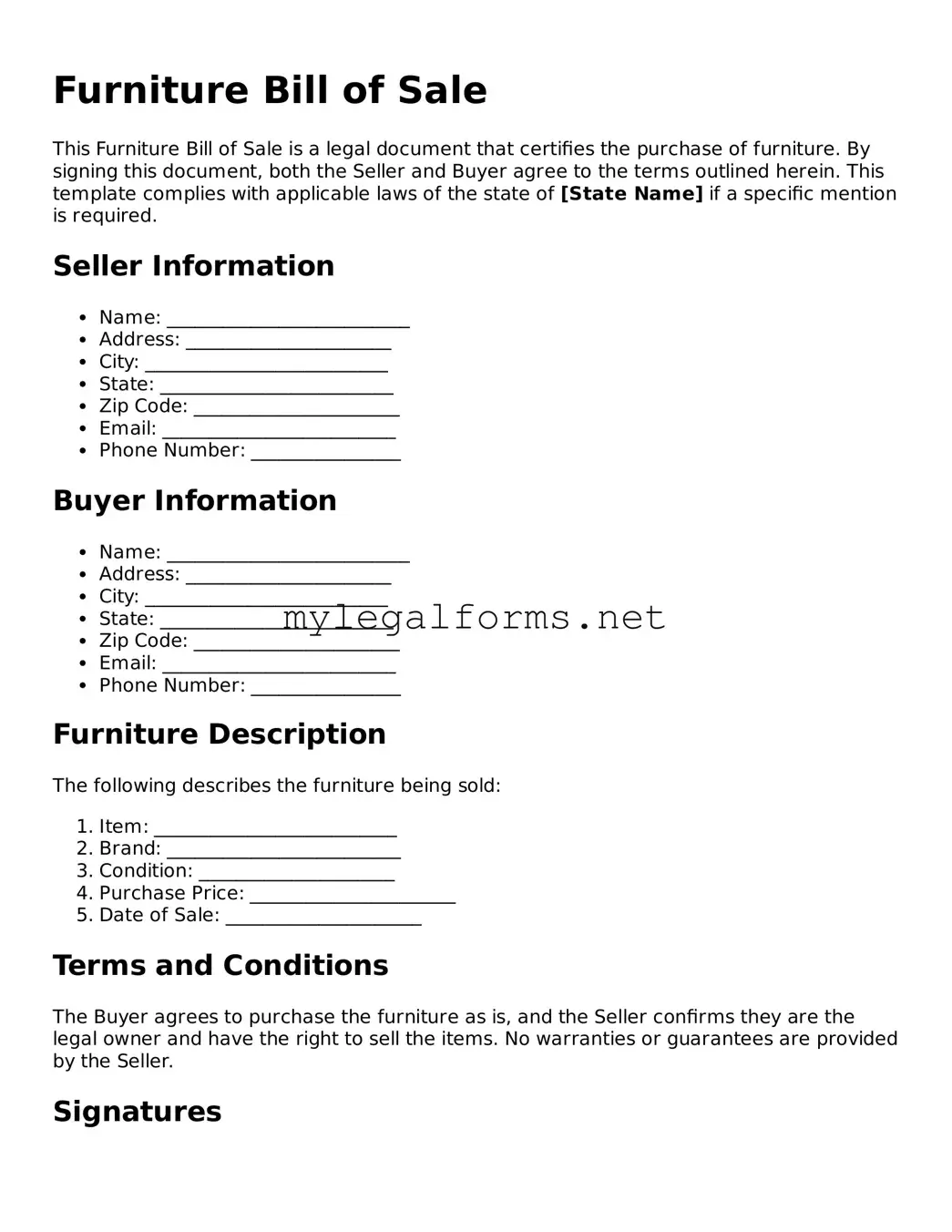When completing a Furniture Bill of Sale form, many individuals overlook critical details that can lead to confusion or disputes later on. One common mistake is failing to include the full names and addresses of both the buyer and the seller. This information is essential for establishing a clear record of the transaction. Without it, identifying the parties involved can become complicated, especially if issues arise in the future.
Another frequent error is neglecting to provide a complete description of the furniture being sold. Simply stating “furniture” isn’t enough. It’s important to detail the type, condition, brand, and any unique features of the items. This clarity helps both parties understand exactly what is being exchanged and prevents misunderstandings.
Many people also forget to include the sale price. This might seem obvious, but leaving out the amount can lead to disputes about the value of the transaction. It’s crucial to document the agreed-upon price clearly, as this serves as a reference point should any disagreements arise later.
Not specifying the payment method is another common pitfall. Whether the buyer is paying in cash, via check, or through another method, this should be clearly noted on the form. Including this information protects both parties and provides a record of how the transaction was completed.
Additionally, some individuals overlook the importance of including the date of the transaction. This detail is vital for establishing a timeline and can be important if any legal issues come up later. A simple oversight can lead to complications, especially if there are questions about when the sale occurred.
Another mistake involves not having both parties sign the document. A Furniture Bill of Sale is only valid when it is signed by both the buyer and the seller. This signature confirms that both parties agree to the terms outlined in the form. Without signatures, the document may not hold up in case of a dispute.
Finally, failing to keep a copy of the completed form can be a significant oversight. Both the buyer and seller should retain a copy for their records. This ensures that each party has access to the terms of the sale and can refer back to them if needed. Keeping a copy can save a lot of headaches down the road.
